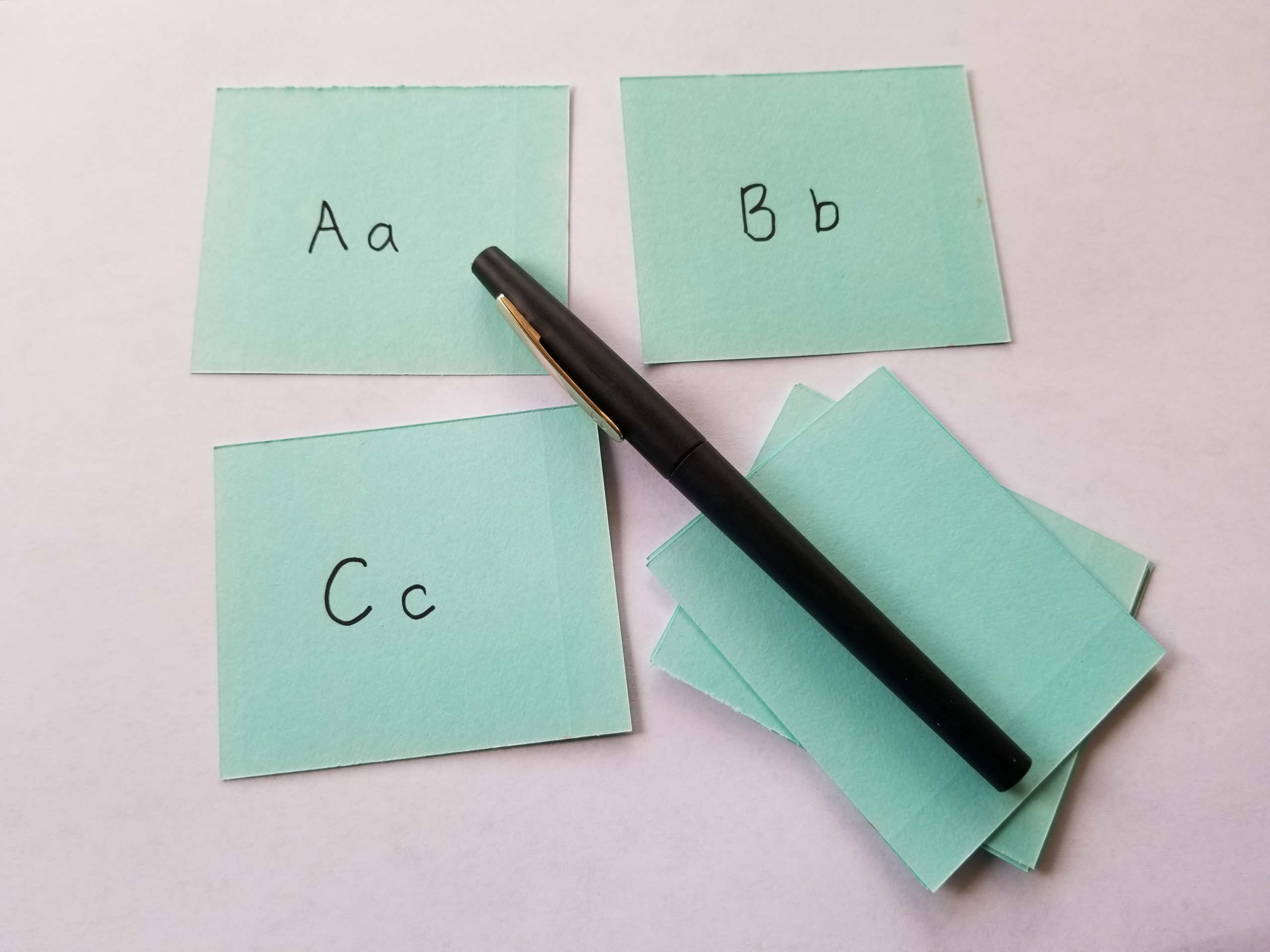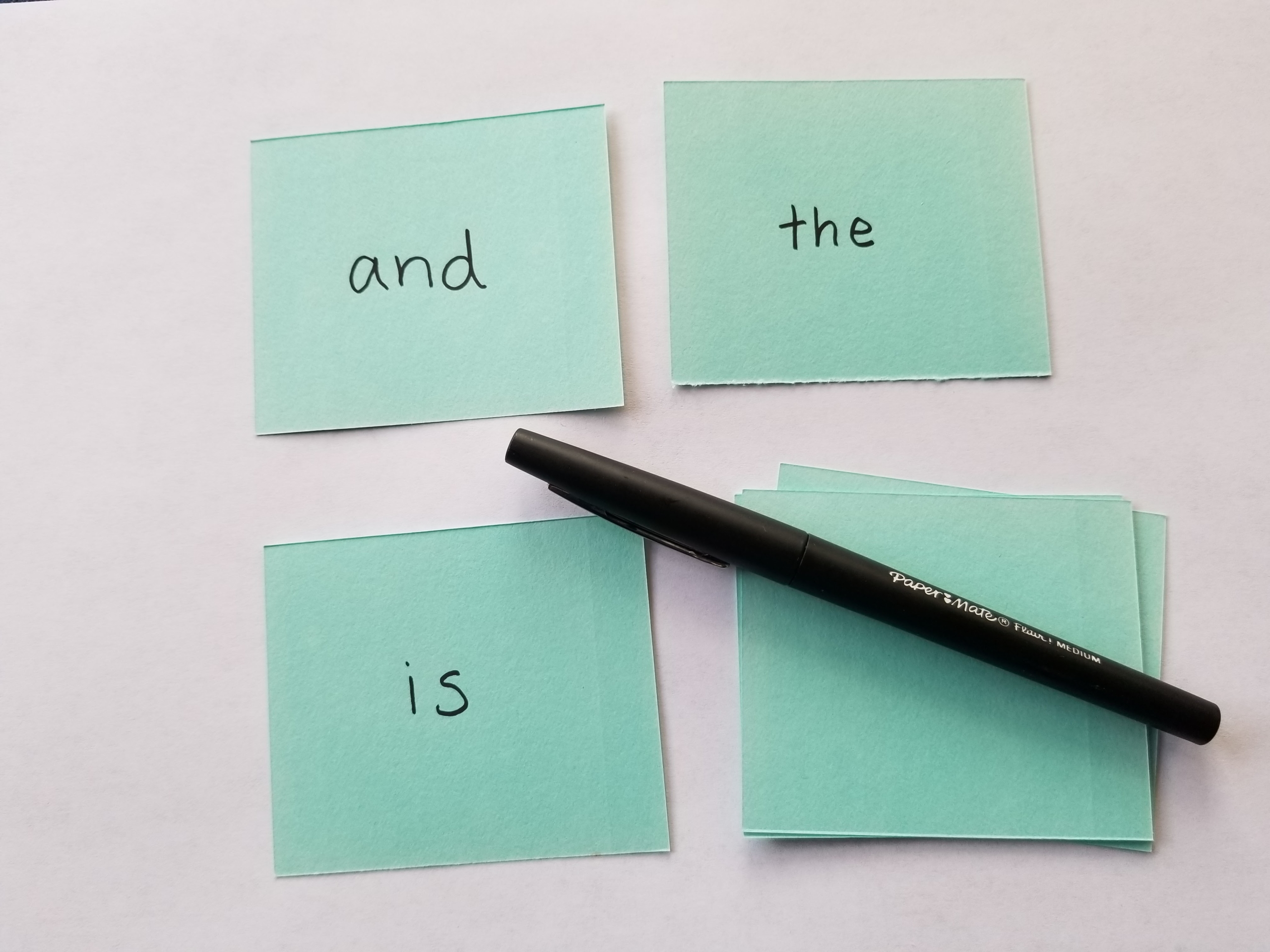By Sarah Tiglao
Learning letters, letter sounds, and eventually sight words becomes a fun game that your little one will want to play again and again, with this easy activity that grows with your children. Read on for step-by-step instructions on how to make a fun, simple, free alphabet flash-card game to play at home or bring with you. You’ll also learn how to adapt it to your child’s skill level as they progress—plus how to keep it fun even for kids who aren’t yet emotionally prepared to handle the frustration of losing.
In order to learn to read, children must develop an understanding of letters as symbols that represent sounds, which can then be combined to make meaningful words, sentences, and paragraphs. Even once children have a strong foundation in letters and letter sounds, they’ll have to learn to recognize certain “sight words” like “said” and “whose” that appear frequently in elementary school texts but don’t follow typical spelling patterns.
Whether your child is learning letter names, the sounds associated with letters, or starting on sight words, this game will help make the memorization fun! You’ll use index cards to make your very own homemade playing cards to play an adaptation of the classic card game of War: Alphabet Flash-Card Game of War or Sight Word Game of War. You can also just print our free premade cards and cut them apart to get started playing right away!

Materials:
1 pack of 3 x 5-inch index cards (or any stiff paper or thin cardboard cut into rectangles)
Markers or pens
Optional: list of sight words (use a list provided by your child’s teacher or one of these lists)
Cost: Free if you have index cards on hand or are willing to cut up some cardstock, paper, or thin cardboard to make your own! You can also just pick up some index cards for $1-2. It’s well worth it—they’re in our absolute top must-have tools for teaching reading.
How to Make Alphabet Flash-Card Game of War: To make the game, simply write one letter on each card. (Use index cards as they are, or cut them in half to make the cards fit more easily in little hands.)
I recommend you write each letter on two cards, so that each comes up twice in a game. For the very youngest of children, write only the uppercase version of the letters. Once they have mastered those, add lowercase letters to the mix.
How to Make Sight Word Game of War: Write one word on each card. Again, write each word from your list on two cards. It’s often a good idea to start with just a small list at first and gradually add more words as your child is ready for them.
Tip: Include a majority of words your child knows or can sound out, to give them lots of chances to feel like winners and encouragement to stay engaged!

How to Play Alphabet Flash-Card Game of War and Sight Word War:
- Shuffle or mix all the cards together and then deal out half to the child and half to the parent.
- Say “1-2-3-War!” and both simultaneously show your top card. Have your child try to identify the names or sounds of the letters, or read the sight words. The child gets to place either or both cards on the bottom of their pile if they can read them. When they can’t read one, explain what it says and add it to the bottom of your own pile.
- Keep playing until your child has all the cards in their pile.
No-Losing Variation: Obviously, the aim of this game is early literacy, not making our kids feel like losers if they don’t yet know how to read a letter or word. If your child is very new to recognizing letters or reading sight words, or you are concerned they will get too frustrated by losing their cards, try this variation:
Rather than losing their cards when they can’t read them, let your child hold onto their own cards that they can’t read, and only withhold your own cards when they can’t read them. Tell what the cards say and place them on the bottom of the two piles. Or even replace them on the top for very young kids—remember the aim is for them to keep playing and keep learning! You can always up the competitiveness of the game later.
Letter-Sound Variations: Once your child has mastered the names of the letters, it is time to start learning their sounds. In this version, your child wins cards by knowing the sound each letter makes.
This version can also become more complex as your child develops. Initially, you will want to start with just the 26 letters in the alphabet (for vowels, teach them the short vowel sounds, e.g. A is for apple), but once they master those sounds, you can add in phonemic chunks like /th/ /ou/ /ng/ and so on. Recognizing these patterns will be hugely helpful as they begin to read.
Let us know how your child likes Alphabet Flash-Card Game of War and if you come up with any fun adaptations!
Sarah Tiglao is a writer, designer, and mother of three energetic boys; her recent works include a children’s book called Christmas in Quarantine.
Alphabet card photos by Sarah Tiglao
Pin me for reference



